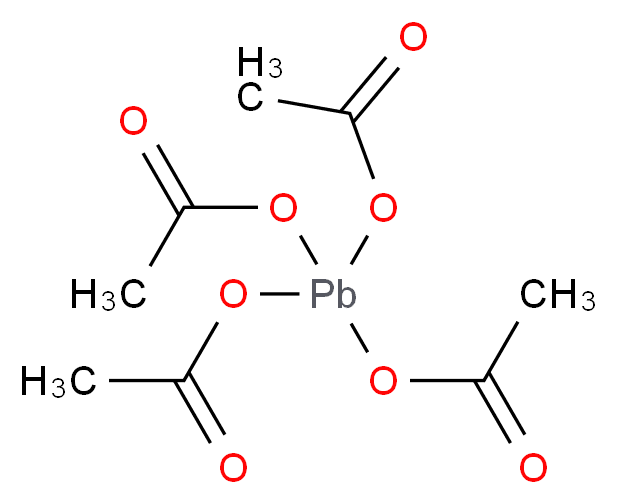Formula Pb(C2H3O2)4 Density 2.23 g/cm³ | Molar mass 443.38 g/mol Melting point 175 °C | |
 | ||
Appearance colorless or pink crystals | ||
Lead(IV) acetate or lead tetraacetate is a chemical compound with chemical formula Pb(C2H3O2)4 and is a lead salt of acetic acid. It is commercially available often stabilized with acetic acid.
Contents
Structure
In the solid state the lead atoms are surrounded by four acetate ions which are bidentate, each coordinating via two oxygen atoms. The lead atom is 8 coordinate and the O atoms form a flattened trigonal dodecahedron.
Preparation
It can be prepared by reaction of red lead with acetic acid. The other main lead acetate is lead(II) acetate.
Reagent in organic chemistry
Lead tetraacetate is a strong oxidizing agent, a source of acetyloxy groups and a general reagent for the introduction of lead into organolead compounds. Some of its many uses in organic chemistry:
Safety
Lead(IV) acetate may be fatal if ingested, inhaled, or absorbed through skin. It causes irritation to skin, eyes, and respiratory tract. It is a neurotoxin. It affects the gum tissue, central nervous system, kidneys, blood, and reproductive system. Its oxidising nature can indirectly lead to many diseases, even cancer, by free radical mechanism.
